Political History of Tamil Nadu
Compared with rest of India, Tamil Nadu has had a healthy administrative and political culture, more or less stable economic life, and continuity of traditions from the hoary past to the present. Madras Presidency of South India came into existence due to the administrative and political needs of the British. The Madras Presidency was formed in A.D (C.E.) 1801. The Presidency, as it existed during the 19th and 20th centuries, comprised of the present states of Andhra Pradesh, Malabar region of Kerala, Southern Karnataka, Southern most part of Odisha and Union Territory of Lakshadweep.
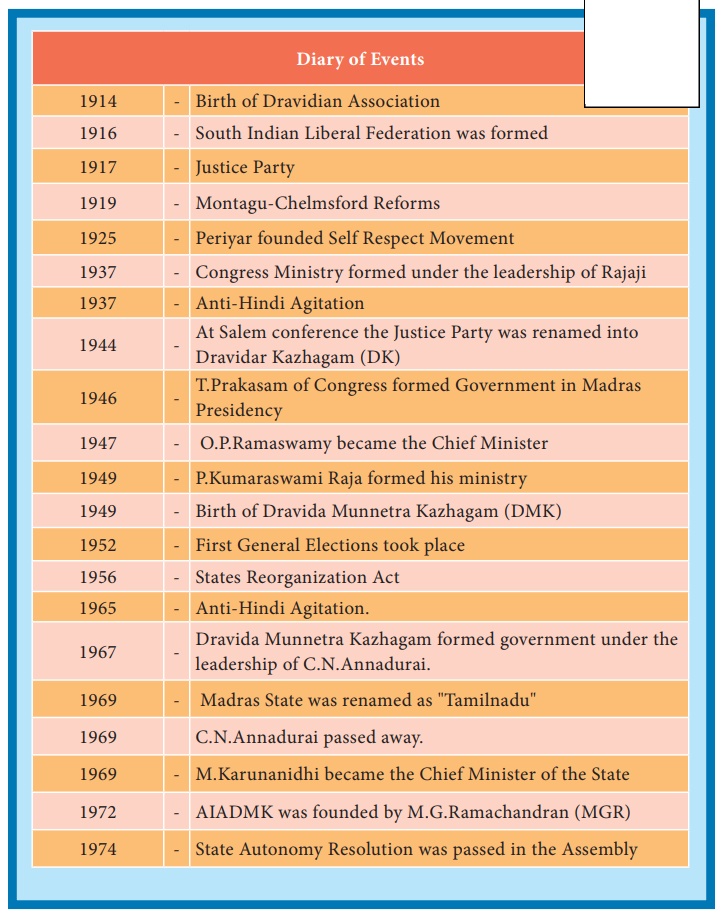
Madras Presidency politics in the early part of 20th century was dominated by the “Brahmin – non – Brahmin conflicts”. Scholars and political thinkers believed that understanding the conflicts between these two groups, (the Brahmins and non – Brahmins), is necessary to understand the South Indian Politics and society.
Madras Presidency
Simultaneously a few members of Non-Brahmin caste groups sought employment in industries, commercial enterprises etc., Significant but a portion of non-Brahmin caste groups migrated from rural areas to urban pockets of the Presidency and wanted to ascertain their identity as ‘Dravidian’ and ‘Tamils’ and gradually challenged the monopoly of powers and privileges enjoyed by the Brahmins in politics, administration and society.
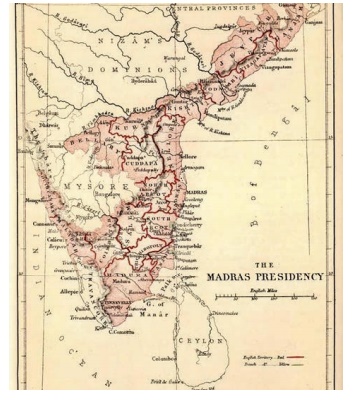
The word ‘Dravidian’ was used by scholars and non – Tamils to identify non-Aryan Tamil speaking people. At the same time Brahmins were identified as “Aryans” and the custodians of Sanskrit civilisation where as non-Brahmins were considered as “Dravidians” and the custodians of Tamil language, culture and civilisation.
Emergence of Dravidian Movement
In order to protect and promote the Tamil identity, culture, socio-political and economic interest of non -Brahmins, a movement called ‘Dravidian Movement’ was started in Madras Presidency by a group of non – Brahmins.
Dravidian and Non-Brahmin Identity
In 1801 Madras Presidency was formed by the colonial regime as a multilingual province (Tamils, Telegus, Malayalees, Kannadigas and Tulus). India’s diversity could be noticed in the political developments of the Madras Presidency. In Bengal and in the rest of North India a Sanskrit and Vedic centered Indian culture was projected, besides an Indo-Aryan or Indo-German group of languages were acknowledged. Non-Vedic, Non – Sanskrit cultures were not recognized. The deciphering of Brahmi script in 1837 by James Principe and researches on south Indian languages (Ellis in 1816 and Caldwell in 1856) came to establish that Indian culture was not homogeneous;
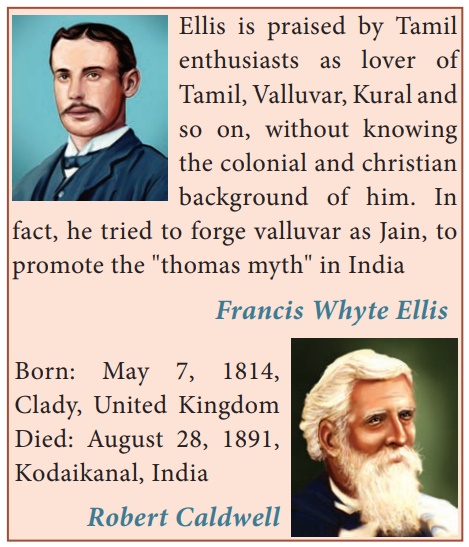
Buddhist and Dravidian traditions also existed in India. In the south, especially in the multi-lingual Madras Presidency, theories on Dravidian group of languages and Dravidian cultural heritage led to assertion of Dravidian identity among the Non-Brahmin.
Two factors (1) Brahmins claiming superiority over Non-Brahmins and (2) Brahmins monopolizing educational and employment opportunities transformed the Dravidian identity into Non-Brahmin identity. (In Maharashtra too Mahatma Jyotiba Rao Phule launched a Non-Brahmin movement on similar lines). Dravidian also indicated the Non-Brahmins in south India.
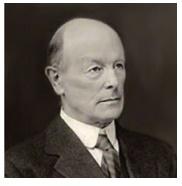
The Non-Brahmins of the Madras Presidency had a grievance that the emerging nationalist leaders paid no heed to non-brahmin issues. In 1852 Gangalu Lakshmi Narash expressed this grievance, seceded from British Indian Association and floated his own organization named Madras Native Association. In the post-mutiny period, the non-brahmin leaders undertook social reforms rather than political reforms. After the introduction of Minto-Morley reforms in 1909 the non-brahmin leaders of Madras Presidency began to protest the inadequate representations to them in education and employment.
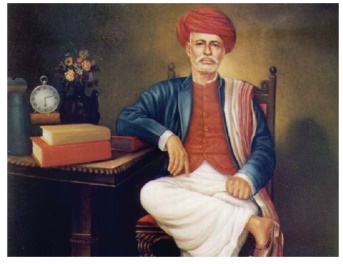
Sir Alexander Gordon Cardew, a member of Governor’s Executive Council submitted (1913) to prove that the Brahmins who formed only three percent of the population cornered most of the opportunities.
Justice Party
The major political organization of that time, Indian National Congress was dominated by Brahmins had refused to consider the demands of non-brahmin members. Thus the non-brahmin leaders of Madras Presidency began to think of floating a non-brahmin political organization. The prospects of political reforms after the First World War, and the possibilities of representing institutions stimulated their move.
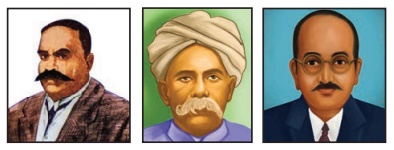
In 1916 Dr.T.M. Nair, Pitti Theagarayar and Dr.C. Natesan founded the South Indian Liberal Federation to promote and safeguard the socio-economic political interests of the non-brahmin. This South Indian Liberal Federation (SILF) came to be popularly known as the “Justice Party” named after the English journal Justice. Through their relentless efforts they secured reservation of seats for the non-brahmin in the elections to the legislative council.
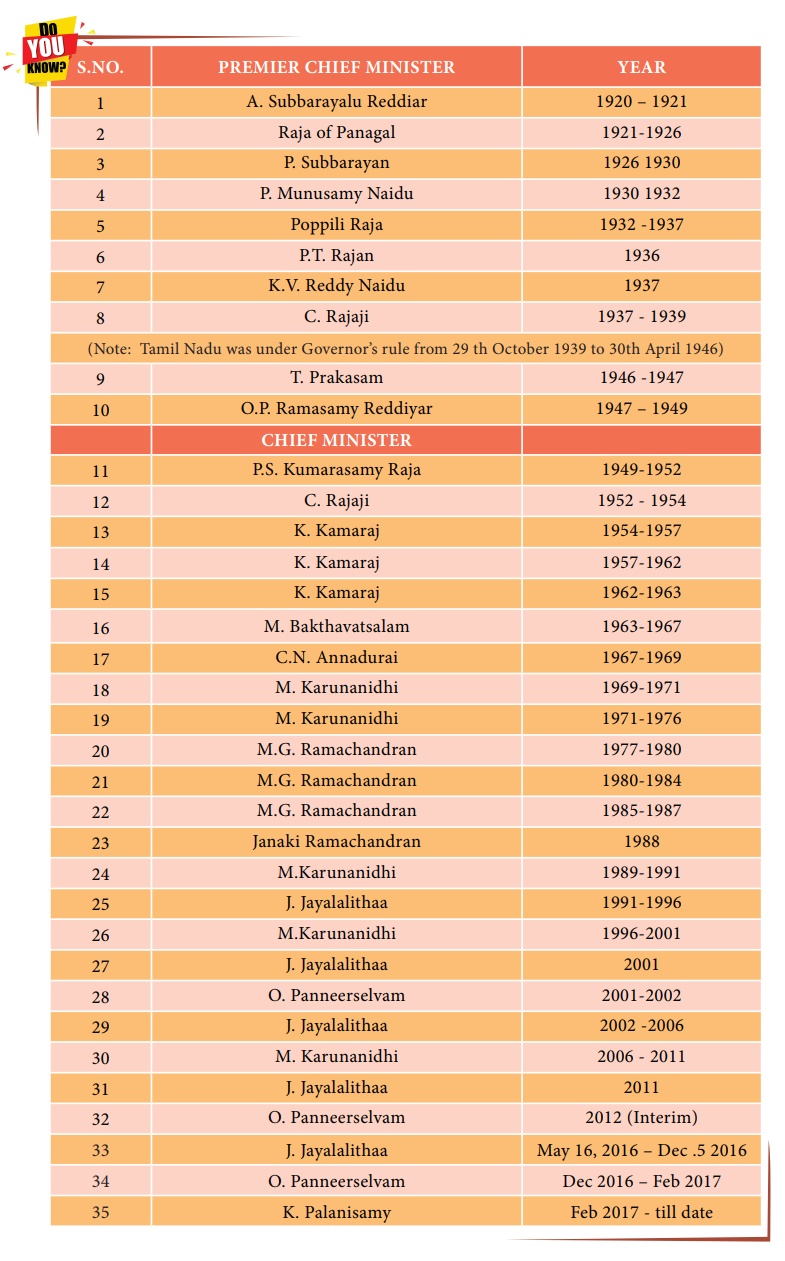
The main objectives of the Justice Party (JP)
i) To create and promote the Educational, Social, Economic, Political and material progress of all communities other than Brahmins of South India.
ii) To work for Non-Brahmins upliftment through Constitutional government.
iii) To make the government truly a representative government.
iv) To create public opinion infavour of Non-Brahmins demand.
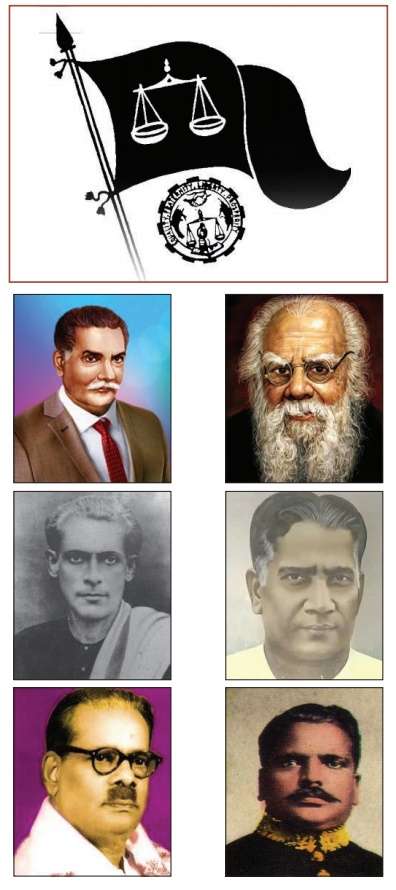
Montagu Chelmsford reforms 1919 introduced dyarchy in the presidencies by which a few departments were earmarked for Indian ministers chosen from the elected members. In the first elections under dyarchy in 1920, the Indian National Congress as a part of the Non-Co-operation Movement boycotted the elections, but many congressmen contested the elections under different banners.
The Justice Party won majority of the seats and A.Subbarayalu became the Chief Minister and after his death, Raja of Panagal became the Chief Minister of Madras in 1921.
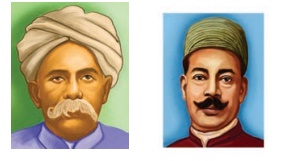
Contributions of Justice Party
In spite of the fluctuating fortunes in the subsequent elections, the Justice party continued to hold power from 1921 to 1937. They introduced a number of reforms. Through communal Government Order they ensured adequate number of opportunities to every category of non-brahmin communities. They removed discrimination against Sudras and Panchamas in public roads, transports, restaurants and public wells. They regulated the temple affairs through the newly constituted Hindu Religious Endowment Board, earmarked plots of land for the Panchamas (Panchami’s Land) introduced new township and industrial estates. Special efforts were taken to provide education for the children of depressed classess. For the first time they experimented with “Noon Meal Scheme” in a few schools. Knowledge of Sanskrit as the basic eligibility for medical education was removed which facilitated non-brahmin students gaining entry into medical education. On an initiative from Dr. Muthulakshmi and others, Devadasi system was abolished in Tami nadu and women were enfranchised. Co-operative societies were promoted. Mirasdari system was abolished, and a number of irrigation schemes were introduced in 1923.
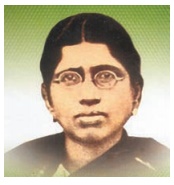
Annamalai University and Andhra University were founded during their regime. It was the Justice Party which provided the most successful government though they were assigned only a few departments.
Periyar E.V. Ramasamy:
Peiyar E.V. Ramasamy considered the decision of Rajaji’s government to impose Hindi as a compulsory subject as a move to establish ‘North Indian imperialism’ and destroying the Tamil language and culture. Periyar, further, maintained that the imposition of Hindi was a calculated effort to sub judicate the Dravidians in order to ascertain the supremacy of the Aryans.
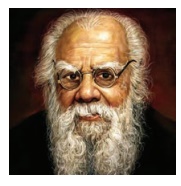
Madras Presidency has witnessed massive anti-Hindi agitations and Periyar was imprisoned by the provincial government. It is significant to note that in fifteen years he went to jail twenty- three times and got the nickname as ‘jailbird’ (Siraiparavai). In 1938, Periyar was imprisoned for his Anti-Hindi agitation and then he was elected as the president of Justice Party. In the same year, the Justice Party passed a resolution that Tamil Nadu should be made as a separate state loyal to British government and it should be under the direct control of the Secretary of State for India.
Periyar E.V.Ramaswamy who played a pioneering role in the Madras Presidency Congress, had tried his best to make the Tamilnadu Congress Committee adopt resolutions in favour of proportional representation for the non- brahmins in political arena. He gave an effective leadership to the Vaikom Sathyagraha and campaigned against caste-discrimination in the Cheranmadevi Gurukula, founded by congress.
When all his efforts failed to make congress adopt his programme, he left congress and launched the self-respect movement in 1925. He shunned electoral politics and instead campaigned for social reforms, especially for eradication of caste system, removal of indignities and gender based restrictions on women, and rejection of hereditary priesthood. The self-respect movement carried on a vigorous campaign against age old superstitious beliefs and practices in every sphere and questioned the role of religion in justifying and sustaining such irrational traditions and inequalities. The Self Respect Movement campaigned for rationalism, and against denial of dignity and equal status of individuals (including women) under the garb of tradition and religion.
The Self Respect Movement ordained its members to give up caste surname and caste-religious identities; it introduced the self -respect marriages. It fought against not only untouchability but even against the caste-system and the caste based disabilities and indignities imposed on individuals.
The Self Respect Movement propagated not merely letter treatment of women, but for equal rights, equal status an equal opportunities for women. Self Respect Movement’s role in “Women Liberation” was unparalleled and for that E.V.Ramaswamy was given the title “Periyar” in a women’s conference. Periyar’s journal ‘Kudiarasu’ ‘Revolt’ and later ‘Viduthalai’ carried on the effective propaganda of self-respect ideals.
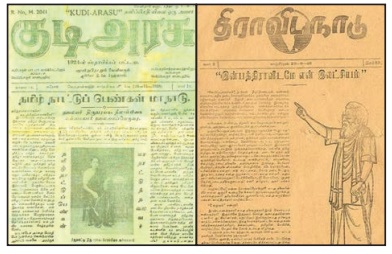
Self Respect Movement
In 1929 the first Self-Respect Conference was held in Chengalpattu. In the crucial elections of 1937 the Congress party, led by C. Rajagopalachari, won majority every seats except one. The Congress party victory was largely because of the decline of Justice Party. The Congress formed the government and Rajaji became the Chief Minister of the Madras province.
Soon after assuming power the Congress government introduced Hindi as a compulsory subject in the schools.
Periyar launched anti-Hindi agitations. A large number of students have participated in the agitations organized by Periyar.
During this period, the Communist Party (formally launched in 1925) became active in campaigning for socialist programme and organized labour movements. M.Singaravelu, and their associates were impressed by the social reform programmes of the Self Respect Movement, which in turn extended support to the economic programme of the communities, and these two movements agreed to work on a common programme (Erode Plan).
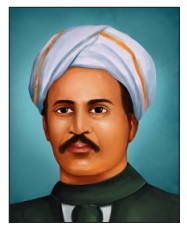
Objectives of Self-Respect League
i) Reforming Dravidian society to make it truly rational.
ii) To teach the truth of ancient Tamil civilization to Dravidians.
iii) Save the Dravidian society from the domination of Aryan culture.
iv) Reforming the Hinduism by eliminating Brahmin influence and superstitious practices.
He wanted to restore the past glory of Dravidian culture by creating social awareness among the non-Brahmins in general and particularly the youth. He advocated Self –Respect marriages, a marriage which was conducted in the absence of Brahmin priesthood, discouraged the people from performing religious ceremonies and not to employ the services of the Brahmins in any of the social events.
Decline of Justice Party
By 1929, the Self-Respect Movement had become a formidable movement in the Madras Presidency. In 1930’s the Justice Party began to face decline in the province. There were three major factors responsible for this decline. Firstly, the party lost its support among the Depressed sections of the society and minorities. Secondly the Self-Respect Movement, under Periyar had become more radical. Finally the elitist and pro- British outlook of Justice Party had also contributed significantly for its decline.
Anti Hindi Agitation
The decline of the Justice Party and Periyar’s refusal to enter into electoral politics together with the growing popularity of Mahatma Gandhi, enabled Indian National Congress to win elections in the Madras Presidency in 1937 and Rajagopalachari became the premier.
He introduced total prohibition (ban on liquor) and abolished the Zamindari system, and introduced legislations removing restrictions on temple entry for the depressed classes. Yet his measures leading to closure of many schools and introduction of Hindi as compulsory language in schools provoked the admirers of self respect and Tamil Nationalists like Mariamalai Adigal to organize the ‘Anti Hindi Movement’ in 1937.
Thousands of agitators including E.V.Ramaswamy courted arrests, and a number of agitators died in prison.
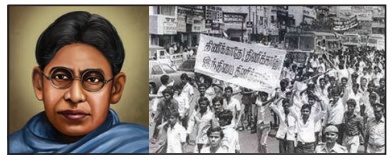
Salem Conference, 1944
In 1944, at Salem conference under the leadership of Periyar, a historic resolution was moved to change the name of Justice Party to Dravidar Kazhagam (DK). Periyar organised ‘Dravida Nadu’ conference and demanded an independent homeland for ‘Dravidians’. Further, he pronounced his very famous slogan ‘Dravida Nadu for Dravidians’ at the conference.
Apart from separate ‘Dravida Nadu’ demand, the Dravidar Kazhagam wanted to establish casteless society, condemned religious rituals, traditions and superstitious in Dravidian society. The Dravidar Kazhagam became very popular in many rural and urban masses, especially among the students. Many non-Brahmin leaders and students have changed their name reflecting Tamil Identity.
Anti-Hindi Agitation 1965
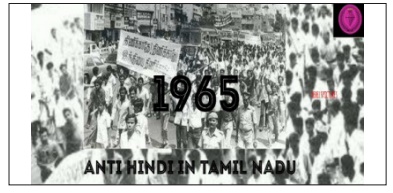
In accordance with the provisions of Article 313 of the Indian Constitution Hindi was made as the official language of the Indian Union on January 26, 1965. In order to protest the decision of the Union Government the Dravida Munnetra Kazhagam decided to observe 26th January, 1965 as a ‘Day of Mourning’. Many leaders of the party and its cadres were arrested. Tamil Nadu had witnessed a large scale of Anti-Hindi agitations. Because of the agitations the cause secured considerable amount of support among the student community. On the other hand the Congress party lost its base and support in the state of Tamil Nadu. Meanwhile, the Dravida Munnetra Kazhagam had withdrawn the demand for ‘Dravida Nadu’ and continue to actively participate in the electoral politics of Tamilnadu and became a ruling party in the state.
Dravidian Movement during second World War and after
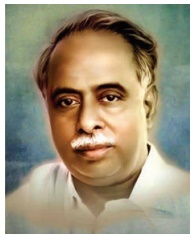
In 1939, the congress protested the government’s declaration involving India in the Second World War which led to the resignation of congress ministry. In Madras Presidency Rajaji’s ministry had resigned but Periyar raised the demand of Dravida Nadu on the ground that independence prior to socio-cultural equality would be injurious to Tamil interests. In 1949, Dravidar Kazhagam split and Dravida Munnetra Kazhagam was formed.
In 1951, the Supreme Court struck down communal reservations in higher education. Immediately Periyar launched a major agitation for the restoration of communal reservation.
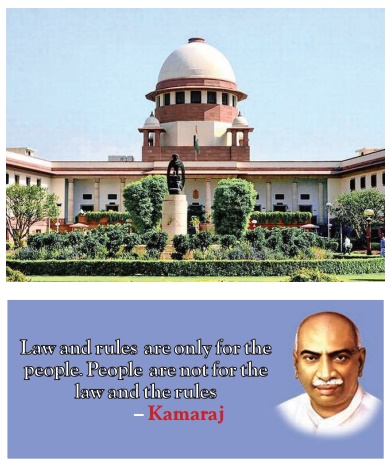
Consequently, the first constitutional amendment Act was passed in the Parliament in favour of reservations for socially and educationally backward classes.
Rajaji Regime (1952-54)
The politics of Madras State in India witnessed the continuation of struggle between statusquoists and reformists. C. Rajagopalachari (Rajaji) who led the first elected ministry in the Madras, under the Republican Constitution, again reduced the number of schools, attempted to impose Hindi in schools and Modified Scheme of Elementary Education which provided for part time learning of hereditary occupations popularly known as kulakalvi.
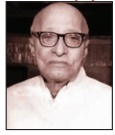
Dravidian leaders launched a statewide protest against movement. Even a section of congress leaders resented Rajaji’s proposals which led to change in Chief ministership.
Kamaraj Era (1954-1963)
Kamaraj abolished the Modified Scheme of Elementary Education, increased manifold the number of schools, built a number of dams for improving irrigation, provided more industrial estates and ensured astonishing industrial growth in the state. He made education more accessible to poor and rural children.
Kamaraj also introduced the noon-meal scheme for school children.
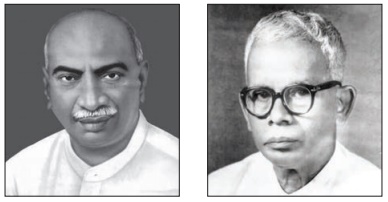
In 1963, Kamaraj resigned (Kamaraj Plan) his chief ministership to become the President of Indian National Congress and M.Bhaktavatchalam took over the reins of the government. The Food shortage and anti-hindi agitation caused the un-popularity of his ministry.
Dravidian Parties Rule
In the general elections of 1967, the congress party was defeated. The Dravida Munnetra Kazhagam formed the government.
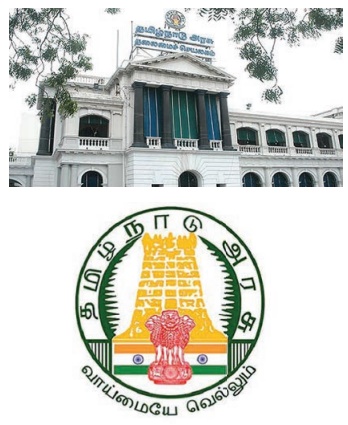
The provision of affordable universal housing for poor, precursor to food security (Rice scheme) and establishment of Slum Clearance Board have substantially improved and received support among the urban poor people also. Significantly, the government renamed the State from Madras to Tamil Nadu in the year 1969. The other major achievements of the party were:
A. Nationalisation of Bus routes larger than 75 miles.
B. Waiver of Tuition fee for poor students of all castes in pre-University and pre-technical courses.
C. Second World Tamil Conference was organised.
D. Supply of subsidised rice for people of Tamil Nadu.
Dravidian Rule in Post – Independence Tamilnadu
For the past 62 years Dravidian parties have been ruling Tamilnadu. Dravida Munnetra Kazhagam decided to enter electoral politics in 1957 and gave up its “Dravida Nadu” demand consequent to Chinese aggression of Indian territories and to overcome newly amended electoral laws. It won a majority in 1967 elections. Annadurai ruled for a brief period (1967-69), yet he renamed Madras state as Tamilnadu, passed civil marriages act, rejected three language policies of central government and enforced a two languages (English & Tamil) policy in Tamilnadu.
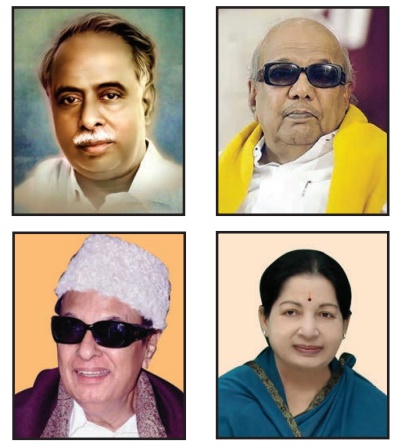
For the first time, he introduced a subsidized rice (one measure one rupee) scheme. His successor M.Karunanidhi continued his legacy. In 1972, M.G.Ramachandran founded his own Dravidian Party (All Indian Anna Dravida Munnetra Kazhagam – AIADMK). He captured power in 1977 and retained the same till his death in 1987. Thereafter, Dravida Munnetra Kazhagam under M.Karunanidhi and Selvi J. Jayalalitha of All Indian Anna Dravida Munnetra Kazhagam led ministries in alternative elections. Besides, these two, there are a few other Dravidian parties like Marumalarchi Dravida Munnetra Kazhagam.
More than, six decades of Dravidian rule contributed remarkably to the development of Tamil. They steadfastly protected the interest of Tamil language, Tamil people and Tamilnadu. A number of welfare schemes were introduced to alleviate the suffering of common people. They ensured food security through subsidized and later free rice schemes, nutritious meal scheme, free education until under graduate level, free electricity for farming, abolition of cycle rickshaws and manual scavenging , cradle baby scheme for the abandoned children, and welfare boards for various unorganized workers, and even for transgender. As a remedy to ruinous caste conflicts, ‘Samathuvapuram’ and ‘Uzhavarsanthai’ were created.
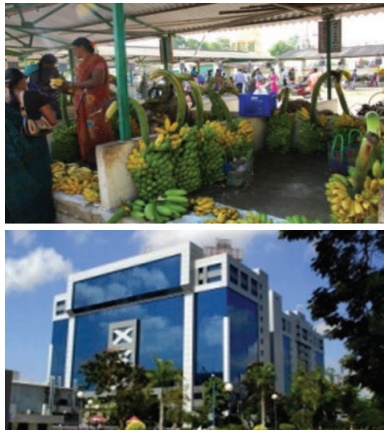
Free electricity was provided to huts, slum clearance board met the housing requirements of slum dwellers. The phenomenal increase in industrial activity increased the opportunities for youth; as a result of these developments Tamilnadu registered a high ranking in HDI (Human Development Index). Today, Tamilnadu is in prominent position in promoting automobile industries, electronics, and in pharmaceutical industries. it’s new economic zones are attracting huge investments. Tamilnadu’s achievements in infrastructural development are acclaimed by all. Roads, harbours, electrification and availability of skilled labour facilitate industrial development.
There has been a manifold increase in the number of schools of different categories. There is a manifold increase in the number of universities. Tamilnadu has exclusive universities for women, engineering and technology, law, medicine, siddha medicine, sports etc. Promotion of Tamil language, through tamil university, ulaga tamil araichi niruvanam, world tamil conference and ulaga tamil semmozhi conference, and script reforms, led to all-round advancement of tamil language.
The Dravidian parties since the days of Annadurai have been championing the cause of secularism and autonomy of the states. The Dravidian parties have also been contributing substantially to national politics. Dravidian political stream continues to be formidable in Tamilnadu.









